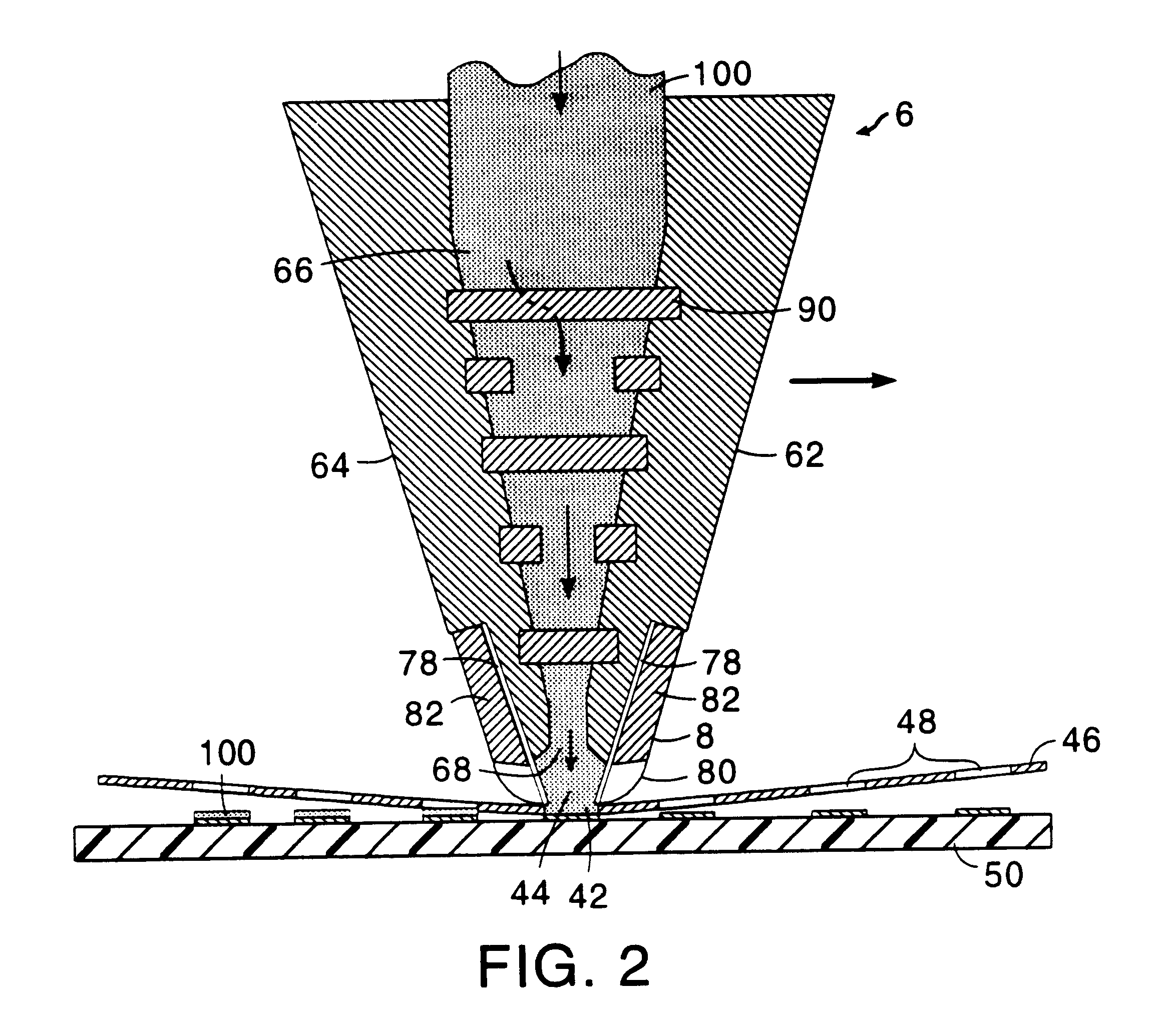Method and apparatus for dispensing viscous material
a technology of viscous material and dispensing apparatus, which is applied in the direction of application, soldering apparatus, manufacturing tools, etc., can solve the problems of viscous material, no effective means, and efforts that do not provide a contained environmen
- Summary
- Abstract
- Description
- Claims
- Application Information
AI Technical Summary
Benefits of technology
Problems solved by technology
Method used
Image
Examples
Embodiment Construction
The principles of the present invention may be applied with particular advantage to obtain an apparatus for compressing a viscous material through openings in a stencil, preferred embodiments of which may be seen at FIGS. 1, 2, 3, 4, and 5 which are described more fully below.
FIG. 1 is a partially exploded perspective view of one embodiment of the apparatus of the present invention. As can be generally seen at FIG. 1, the apparatus has a pressure source 2 which is operably connected to a reservoir 4 containing a supply of a viscous material, a compression head 6 and a compression head cap 8.
More particularly, FIG. 1 shows a pressure source depicted as an air cylinder 2 having a piston (not shown) connected to a rod 10 contained in a cylinder housing 12. Pressure inlet 14 allows for the introduction of air pressure at the top of air cylinder 2 thereby displacing the piston causing piston rod 10 to move downward. The air cylinder 2 is mounted via base 16 to cylinder mount 18 which in ...
PUM
| Property | Measurement | Unit |
|---|---|---|
| Pressure | aaaaa | aaaaa |
| Pressure | aaaaa | aaaaa |
| Speed | aaaaa | aaaaa |
Abstract
Description
Claims
Application Information
 Login to View More
Login to View More - R&D
- Intellectual Property
- Life Sciences
- Materials
- Tech Scout
- Unparalleled Data Quality
- Higher Quality Content
- 60% Fewer Hallucinations
Browse by: Latest US Patents, China's latest patents, Technical Efficacy Thesaurus, Application Domain, Technology Topic, Popular Technical Reports.
© 2025 PatSnap. All rights reserved.Legal|Privacy policy|Modern Slavery Act Transparency Statement|Sitemap|About US| Contact US: help@patsnap.com



